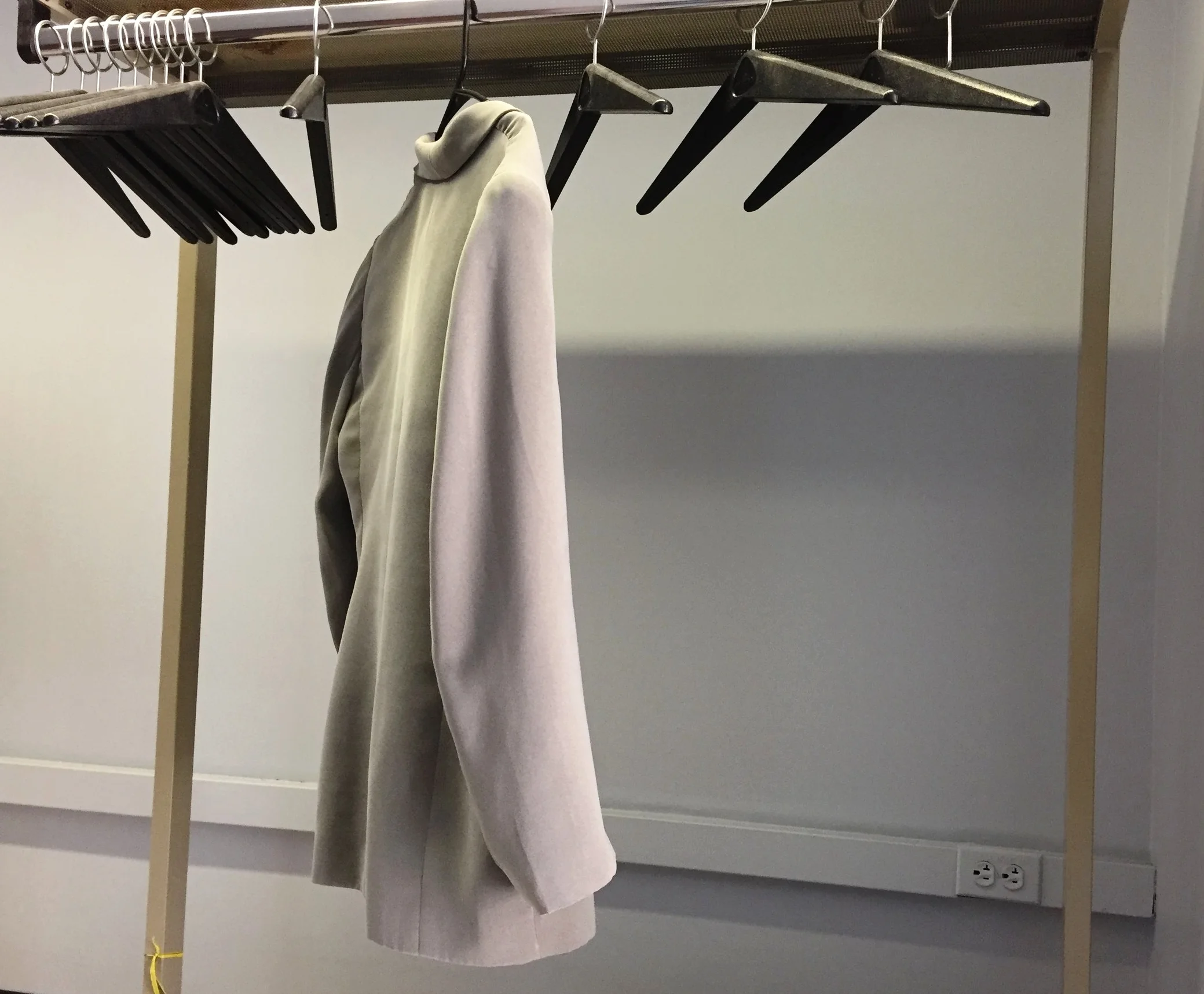In an office building I often frequent I’ve noticed an aging steel coat rack on the second floor. It’s more of an afterthought than anything else, an artifact placed between the men’s and women’s rest rooms years ago, then largely abandoned.
But it’s not totally abandoned. Hanging from one isolated hanger off to the side there’s a gray women’s suit jacket. It’s been there for years, unmoved. Upon closer inspection I see that the jacket is buttoned in front, as if someone intentionally left it with at least the brief thought that it would hold its shape a little better if it were properly fastened on its suspended perch. The shoulders show the deposition of years of dust, sedimentary effects of hanging in an out-of-the-way corner of a weary office building.
It took me months of occasional hallway transits to even realize that this strange thing existed, to even notice it at all. Then it began to capture my imagination. It’s not a particularly well tailored jacket— an off-the-rack separate sold fifteen or twenty years ago at what I surmise was a middle-of-the-road women’s clothing store. Structured in an unusually long double-breasted cut, it had to have been purchased with intention, with a conscious goal of matching it with a particular pair of slacks and business pumps, a deliberate effort at presenting a professional look.
One day, years ago, somebody hung it on its hanger, carefully buttoned it up to holds it’s shape, placed it on the rack, and then walked away. Did the wearer ever intend to return? Did the wearer hang it there as a temporary solution to having a business jacket at work just in case, but not have any other place in her office to put it? Did the wearer hope that someone who needed a jacket would, after a suitable time, assume it was abandoned and simply appropriate it, a passive means of material redistribution?
There are no clues to these questions, considering the layer of dust continuing to accumulate on the shoulders. Sometimes if several people pass by the coat rack in a group, I’ll notice that the gentle swirl of air currents makes the hangar twist ever so slightly on it’s hook, bringing the jacket to barely lucid life. The air settles quickly and so does the jacket, freezing once again into still space.
Someday that jacket is going to disappear. Either its owner will reclaim it, or somebody will relegate it to the lost in found, or the building will reach the end of its life and in its final throes before the wrecking ball, some cleaning crew will dispatch the garment to a dumpster in the parking lot. I worry that the story of how it got there and all of the many decisions that brought it into being—who designed it, who manufactured it, who shipped it, sold it, took it home, wore it, and ultimately hung it up for perpetuity might never be told.
I think about these things. Every time I walk down the hall on the second floor of this particular office building I always check to see if its still there, just to see if anything has changed.

